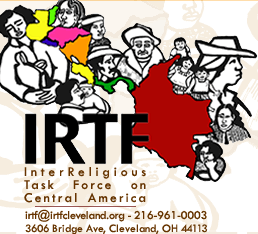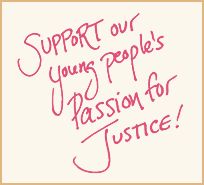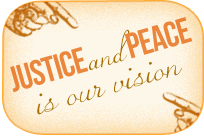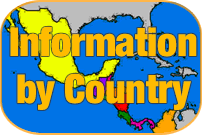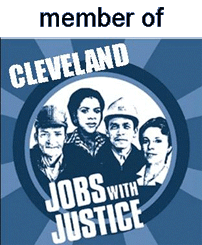Nicaragua


Nicaragua
Fact Sheet
Land and People:
- Largest but most sparsely populated (5.6 million on49,998 sq miles) of the Central American nations.
- Nicaragua borders on Honduras to the north and Costa Rica to the south. Its western coastline is on the Pacific Ocean, while the east side of the country is on the Caribbean Sea.
- Spanish is spoken by about 90% of the country's population. The black population of the east coast region has English as its first language. Several indigenous peoples of the east still use their original languages.
- 69% of the population is mestizo, 17% is white, 9% black and 5% Amerindian.
- Roman Catholicism (72.9%) is the major religion, but evangelical Protestant (15.1%) groups have grown recently, and there are strong Anglican and Moravian (1.5%) communities on the Caribbean coast.
- The Literacy rate comes to 68% (2003 est.)
History:
Nicaragua was first settled by the Spanish in 1522.
The country won independence in 1838. For the next century, Nicaragua's politics were dominated by the competition for power between the Liberals, who were centered in the city of León, and the Conservatives, centered in Granada.
To back up its support of the new Conservative government in 1909, the U.S. sent a small detachment of marines to Nicaragua from 1912 to 1925. The Bryan-Chamorro Treaty of 1916 (terminated in 1970) gave the U.S. an option on a canal route through Nicaragua and naval bases. U.S. Marines were sent again to quell disorder after the 1924 elections. A guerrilla leader, Gen. César Augusto Sandino, fought the U.S. troops from 1927 until their withdrawal in 1933.
After ordering Sandino's assassination, Gen. Anastasio Somoza García was dictator from 1936 until his own assassination in 1956. He was succeeded by his son Luis, who alternated with trusted family friends in the presidency until his death in 1967. He was succeeded by his brother, Maj. Gen. Anastasio Somoza Debayle. The Somozas ruled Nicaragua with an iron fist, reducing its dependence on banana exports, exiling political foes, and amassing a family fortune.
Sandinista guerrillas, leftists who took their name from Sandino, launched an offensive in 1979. After seven weeks of fighting, Somoza fled the country on July 17, 1979. The Sandinistas assumed power two days later. On Jan. 23, 1981, the Reagan administration suspended U.S. aid, charging that Nicaragua, with the aid of Cuba and the Soviet Union, was supplying arms to rebels in El Salvador. The Sandinistas denied the charges. Later that year, Nicaraguan guerrillas known as “Contras” began a war to overthrow the Sandinistas. Elections were finally held on Nov. 4, 1984, with Daniel Ortega, the Sandinista junta coordinator, winning the presidency. The war intensified in 1986–1987. Negotiations sponsored by the Contadora (neutral Latin American) nations foundered, but Costa Rican president Oscar Arias promoted a treaty signed by Central American leaders in Aug. 1987.
Violetta Barrios de Chamorro, owner of the opposition paper La Prensa, led a broad anti-Sandinista coalition to victory in the 1990 elections, ending 11 years of Sandinista rule. Enthusiasm for Chamorro gradually faded. Business groups were dissatisfied with the pace of reforms; Sandinistas, upset with what they regarded as the dismantling of their earlier achievements, threatened to take up arms again; and many people were disillusioned over governmental corruption.
Former Managua mayor and Conservative candidate Arnoldo Alemán won the 1996 election. Former Sandinista leader Daniel Ortega was his closest rival.
In 1998, Hurricane Mitch killed more than 9,000 people, left 2 million people homeless, and caused $10 billion in damages. Many people fled to the U.S., which offered Nicaraguans an immigration amnesty program until July 1999. Nicaragua remains one of the poorest countries in the Western Hemisphere.
In the Nov. 2001 presidential elections, Enrique Bolaños, the ruling Liberal Party leader, defeated Ortega, who was attempting a comeback.
In Aug. 2002, former president Arnoldo Alemán was charged with fraud and embezzlement, and in 2003 he was sent to prison for 20 years. Current president Bolaños triumphantly called it the “frying of the Big Fish.” The anticorruption watchdog, Transparency International, ranks Alemán among the most corrupt leaders of the past two decades.
The country received an enormous show of support from the international community in 2004 when the IMF and World Bank forgave $4.5 billion of Nicaragua's debt. In April 2006, a free-trade agreement with the U.S. (CAFTA) went into effect.
Former Sandinista president Daniel Ortega won the November 2006 presidential election.
Politics:
Politics of Nicaragua takes place in a framework of a presidential representative democratic republic, whereby the President of Nicaragua is both head of state and head of government, and of a pluriform multi-party system. Executive power is exercised by the government. Legislative power is vested in both the government and the National Assembly. The Judiciary is independent of the executive and the legislature. Nicaragua's current president is Enrique Bolaños Geyer . Legislative and presidential elections took place on Nov. 5 2006. These elections gave the presidency to Daniel Ortega for a third time. He won with 39% of the vote, enough to finalize the results.
Economy:
Nicaragua's economy has historically been based on the export of cash crops such as bananas, coffee and tobacco. Nicaragua's rum is renowned as among the best in Latin America, and its tobacco and beef are also well regarded. During the Sandinista War in the early 1980's, much of the country's infrastructure was damaged or destroyed, and inflation ran for a time at several thousand per cent. Since the end of the war almost two decades ago, many state-owned industries have been privatized. Inflation has been brought to manageable levels, and the economy has grown quite rapidly in recent years.
As in many other developing countries, a large segment of the economically poor in Nicaragua is women. In addition, a relatively high percentage of Nicaragua's average homes have a woman as head of household: 39% of urban homes and 28% of the rural ones.
The country is still a recovering economy and it continues to implement further reforms, on which aid from the IMF is conditional. In 2005, finance ministers of the leading eight industrialized nations (G-8) agreed to forgive Nicaragua's foreign debt, as part of the HIPC program. As of 2004, Nicaragua is the 4th poorest nation in the Americas after Bolivia, Honduras and Haiti, with a GDP of $13.24 billion and per capita GDP of around $2,900. Unemployment is officially around 11%, and another 36% are underemployed.
Human Rights:
In 2001 voters elected Enrique Bolanos Geyer of the Liberal Constitutionalist Party (PLC) as president in a generally free and fair election. While civilian authorities generally maintained effective control of the security forces, some members of the security forces committed human rights abuses.
The human rights situation was affected significantly by persistent impunity, corruption, and a political struggle between the Bolanos administration and the opposition dominated legislature and judiciary. During the year the National Assembly attempted to rewrite the constitution and strip the executive branch of powers and institutional control. By year's end a framework law was agreed that would postpone any application of these constitutional changes until January 2007. The following human rights problems were reported:
- unlawful killings by members of the security forces
- harsh detention conditions
- beatings, torture, and other alleged abuses of detainees
- arbitrary arrest and detention of citizens
- politicization and corruption of the judiciary
- harassment and killing of journalists
- corruption and politicization of the Supreme Electoral Council
- politicization of the Office of the Human Rights Ombudsman
- domestic abuse and rape, and wage discrimination against women
- violence against children and child prostitution
- trafficking in women and girls for the purpose of sexual exploitation
- discrimination against indigenous people
- widespread child labor
- violation of worker rights in free trade zones
